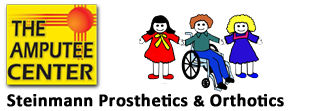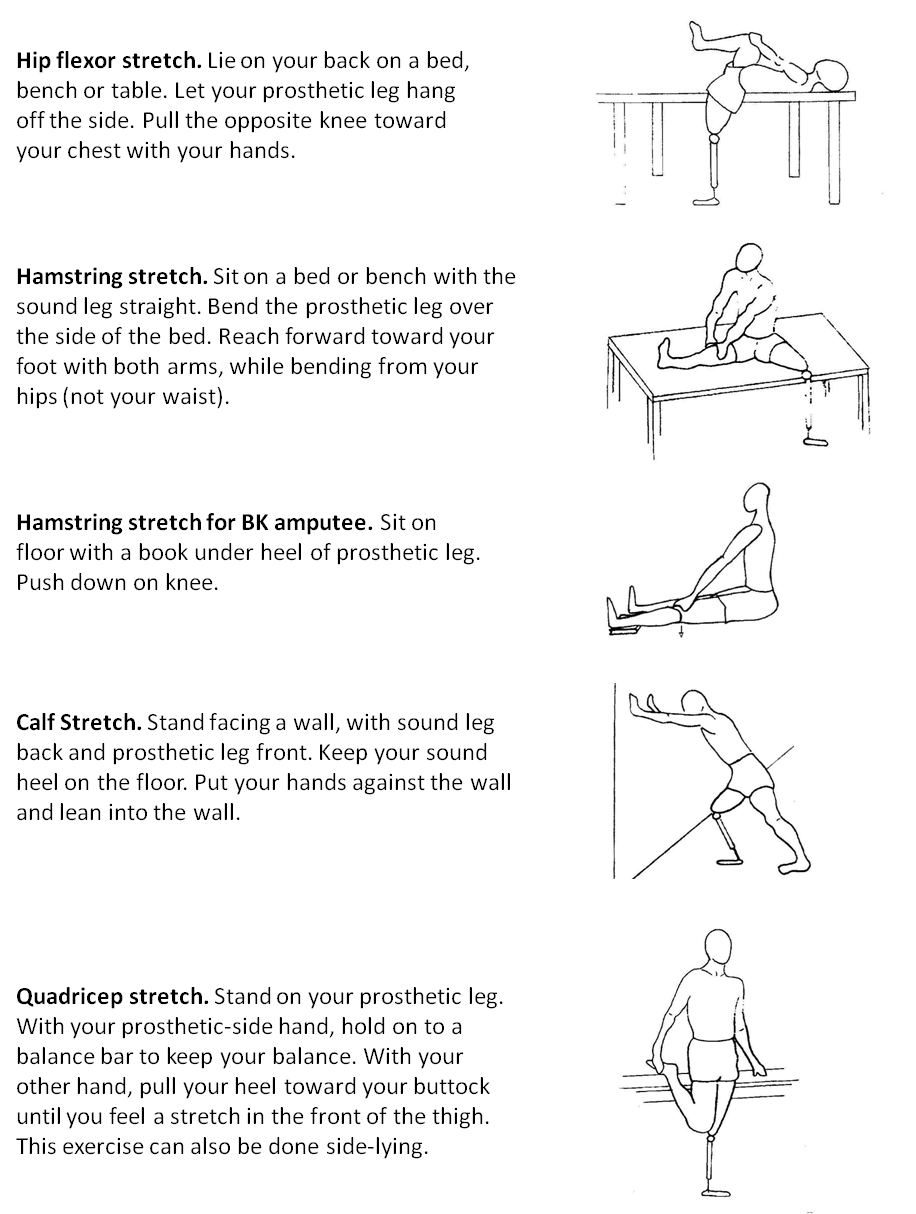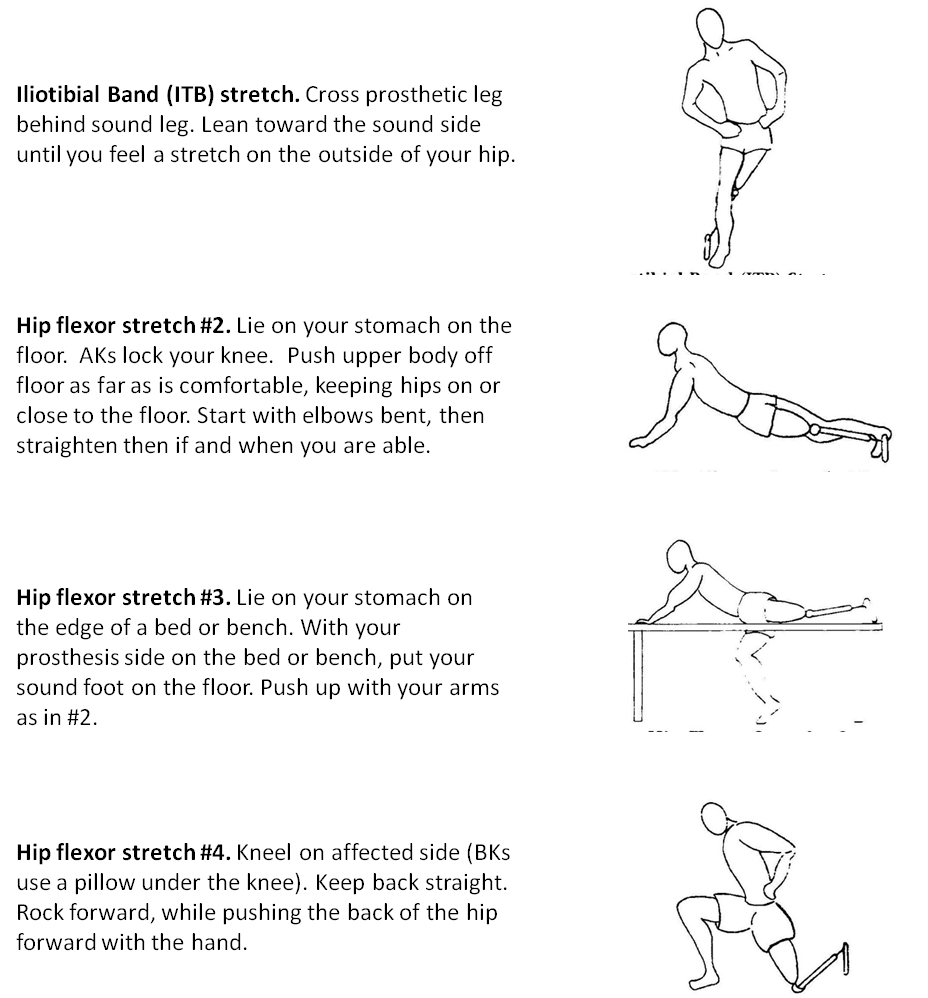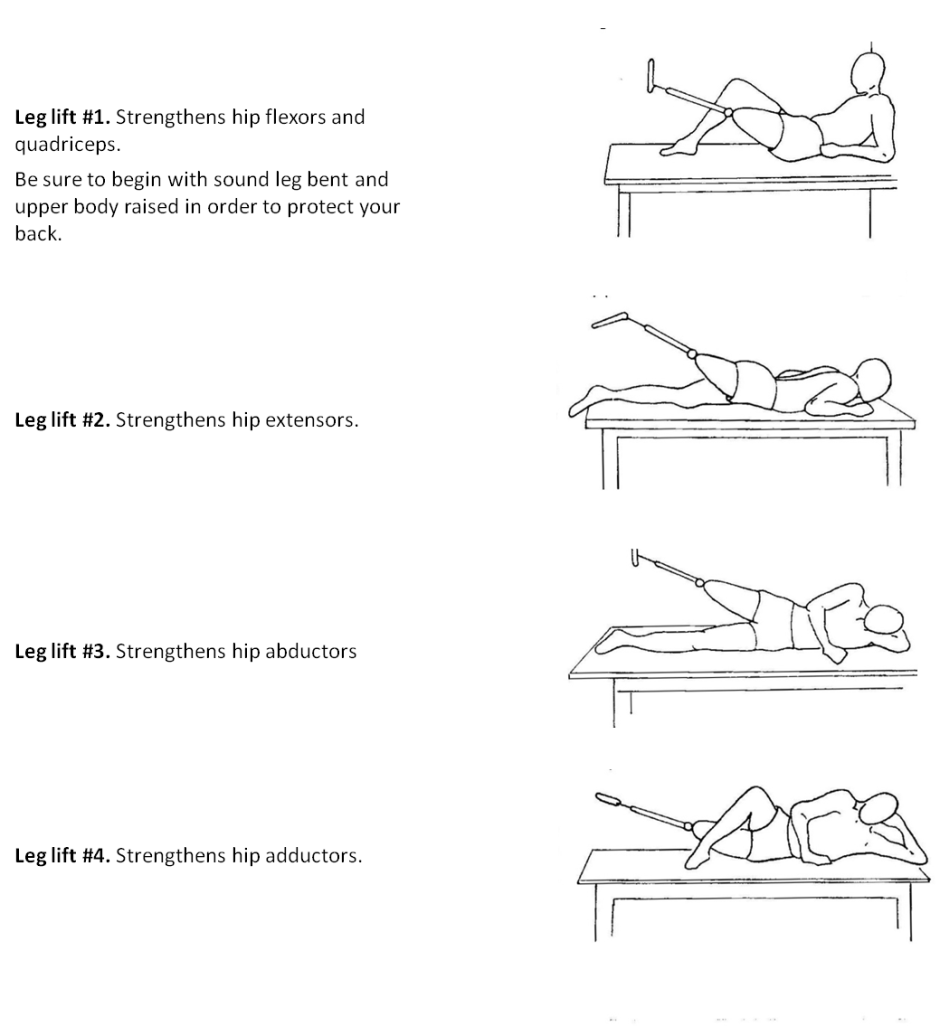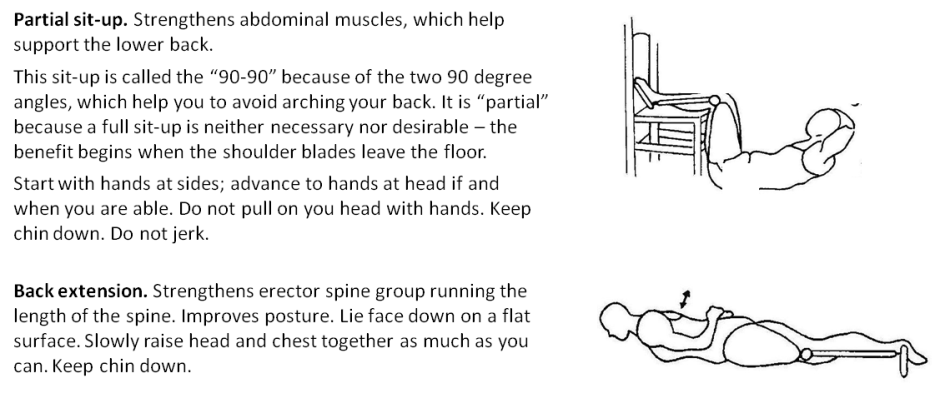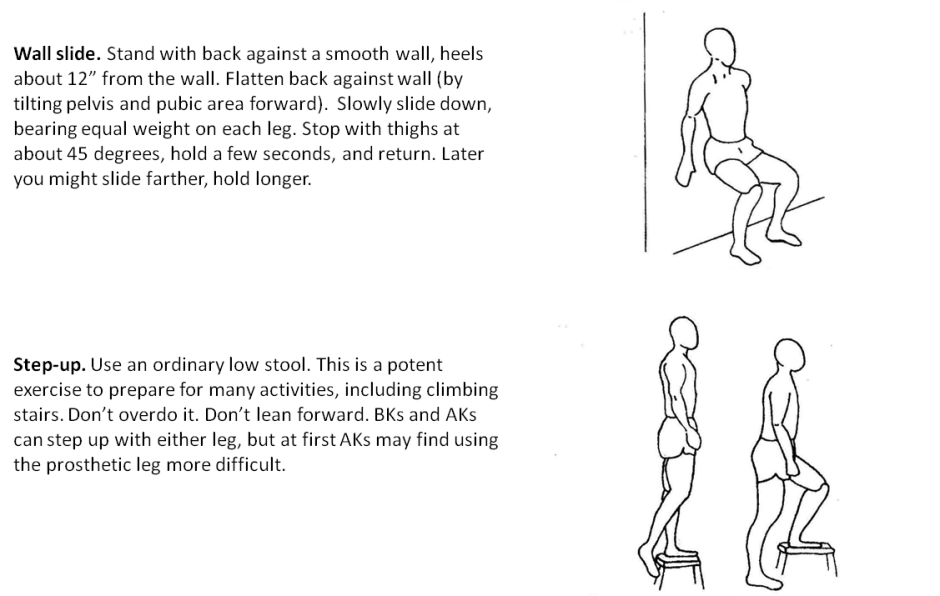Exercises for the Lower Extremity Amputee
The following information is excerpted with permission, and with thanks to the authors:
Exercises for the Lower Extremity Amputee, Beginning Through Advanced. A Program for Regaining Optimal Function
by William Partridge PT, Philip Kreuter PT, and Scott Belding PT. (1997)
Follow these general guidelines for exercise, whether at home, in physical therapy, or at the gym/health club.
- Consult your physician or physical therapist about the best exercises for you, based on your level of health, medications, etc.
- Do all exercises with your prosthesis on, to train your muscles to work as they do when you walk. Check your prosthetic daily.
- Do exercises slowly and with control. Avoid jerking. Concentrate on the muscle group being exercised.
Start slowly. Build up gradually. Daily short sessions are better than long sessions to avoid injury. - Do stretches daily, and before and after strengthening exercises. Hold stretches for 20-30 seconds. Repeat each exercise 3-4 times. Increase the amount of stretch very gradually. A sustained stretch (held 20 seconds or longer) is more helpful than a ballistic (bouncing) stretch.
- Do strengthening exercise at least 3 times/week. Start with only a few repetitions (ie, 5). Increase the weight or number of repetitions if and when the exercise feels too easy.
- No pain. Stop exercise that causes pain. Do not accept sharp or burning pain in the residual limb. If discomfort persists more than a few days, you may be exercising too hard or progressing too fast. Slow down.
- No redness or pressure. Check your residual limb often for redness or signs of pressure, especially in the first few weeks.
- A physician should see any minor injury not responding to routine treatment, and should see any acute injury immediately.
Beginning Stretching Exercises
Stretching helps keep both the sound and residual limbs flexible, will help to prevent injury, and make walking easier and more natural. The illustrations are guides, don’t worry if you can’t get into the position as shown.
Advanced Stretching Exercises
These advanced stretches are desirable when your activity level increases, and are especially helpful if you run or participate in recreational or competitive sports.
Beginning Strengthening Exercises
We now move from stretching to strengthening. Either beginner or advanced exercises can be done at home with minimal equipment in 20-30 minutes. Increasing strength will help your gait, coordination, balance and overall function.
- AK amputee note: important muscles you will be strengthening include hip extensors (gluts), hip abductors (for moving limb to the side), hip adductors (for moving limb inwards), and hip flexors.
- BK amputee note: important muscles you will be strengthening include the quadriceps (thigh) and the hamstrings, as well as all hip muscles associated with the residual limb.
Move slowly into the position as illustrated. Hold it a few seconds. Relax. Repeat. The number of repetitions depends on your physical condition, consult your physical therapist.
For the exercises shown, lie on a flat surface, such as a firm bed or floor with an exercise pad. AKs with hydraulic knee should lock the knee.
